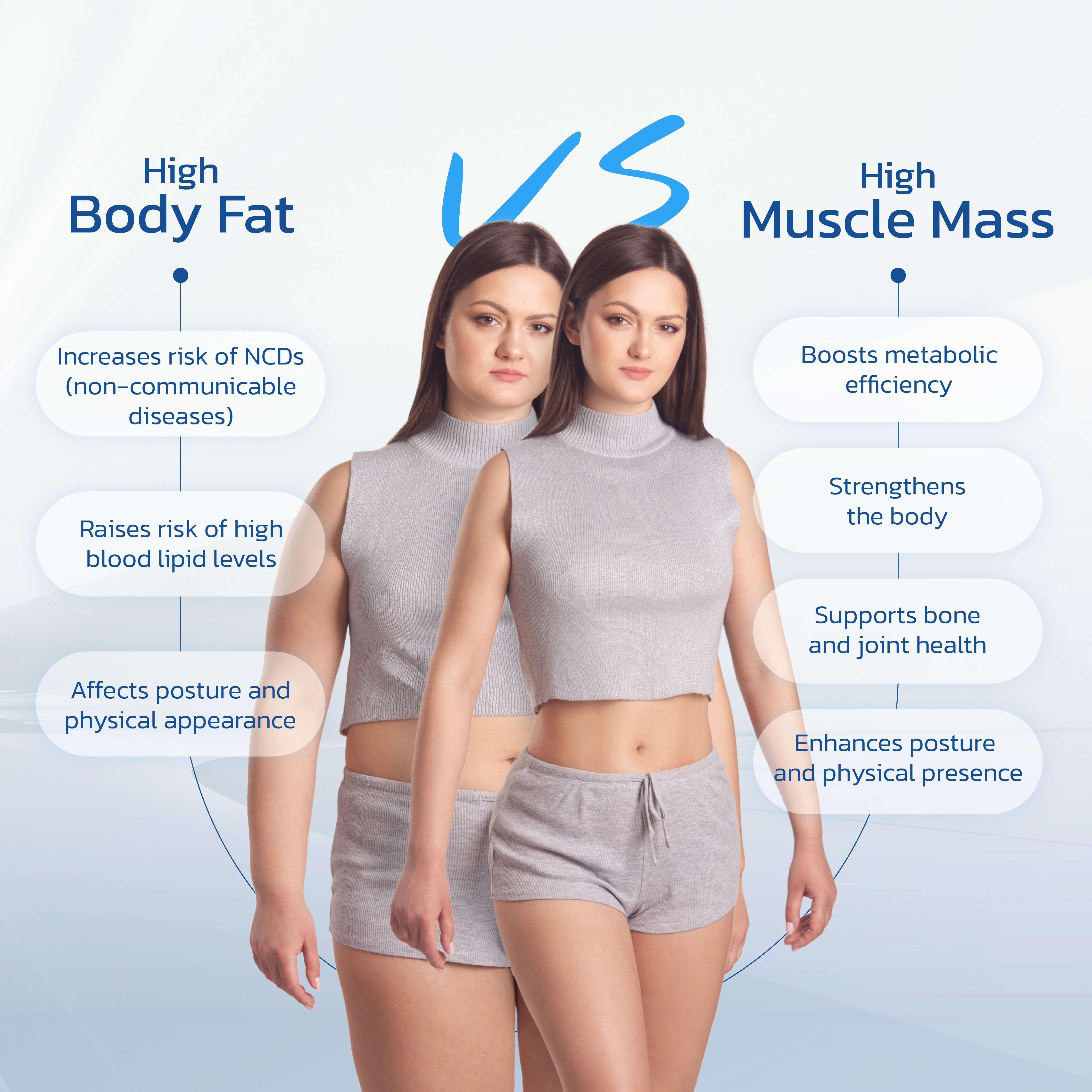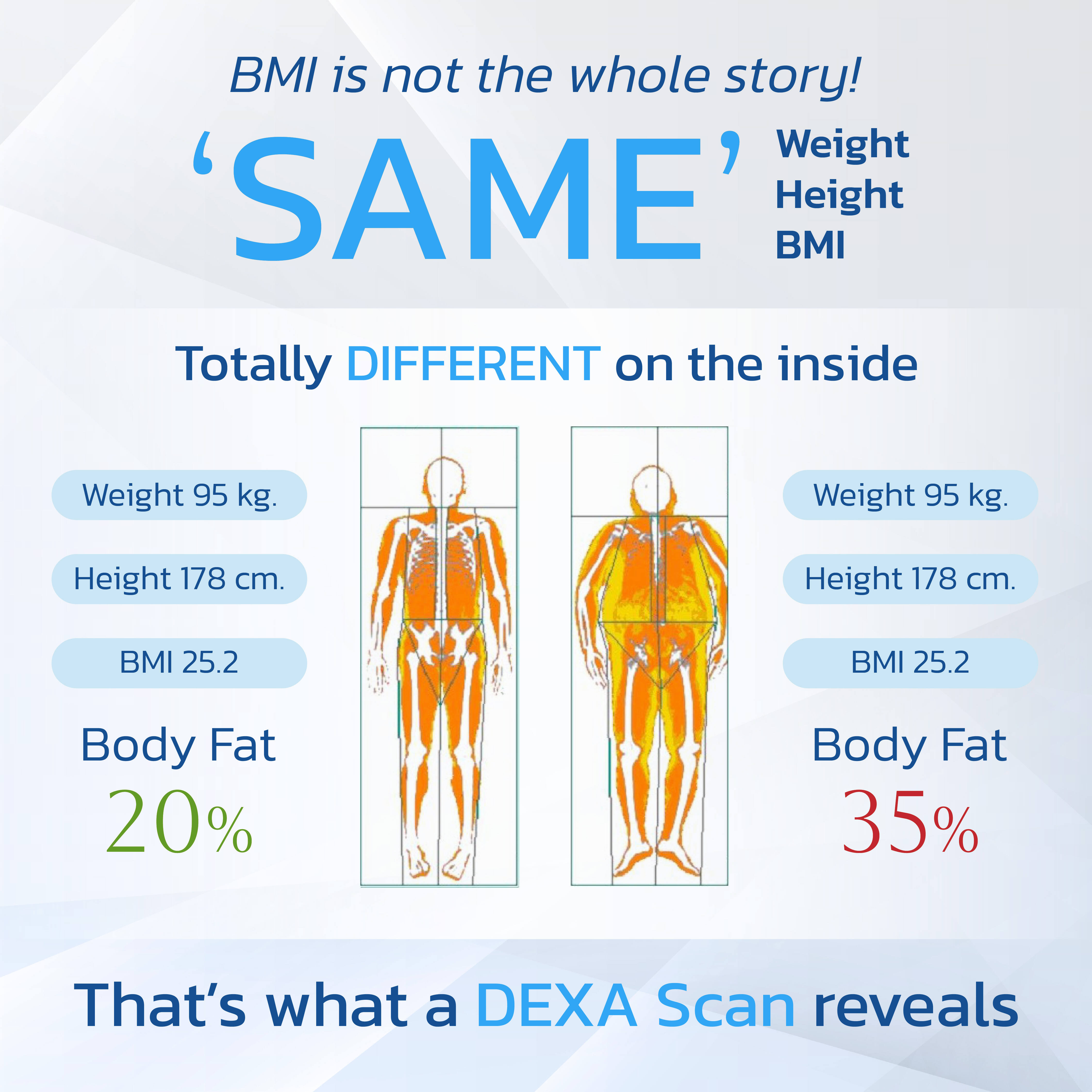DEXA Scan
 Prevention and Wellness Clinic
Prevention and Wellness Clinic

When it comes to assessing body weight and composition, it's important not to judge by appearances alone.
Let’s introduce you to the DEXA Scan!
Have you ever wondered why people with the same weight and height can look different—some appear fat while others look thin, and some thin individuals lack muscle tone? This discrepancy is why you might hear that thin people can also have high body fat.
The body's main components are bones, fat, and muscles, with each component present in different proportions depending on gender. Women naturally have a higher proportion of body fat compared to men, while men typically have a higher proportion of muscle.
The body's main components are bones, fat, and muscles, with each component present in different proportions depending on gender. Women naturally have a higher proportion of body fat compared to men, while men typically have a higher proportion of muscle.
The medical field uses a method called Dual-Energy X-ray Absorptiometry (DXA or DEXA) to examine body composition. This machine scans the body to reveal the precise amounts of muscle, fat, and bone.
If someone has a thin figure, a DEXA scan can reveal high body fat percentages (over 32% for women and 28% for men) and low muscle mass, a condition often referred to as "skinny fat." Excess visceral fat, particularly around the abdomen, usually results from an unhealthy diet and lack of exercise, increasing the risk of chronic non-communicable diseases (NCDs) like high blood pressure, diabetes, and high cholesterol.
The results of a DEXA scan provide a clear picture of the proportions of bone, fat, and muscle, offering valuable information for health care planning and annual health examinations. Additionally, it can track the effectiveness of exercise regimes in increasing muscle mass or reducing fat mass more accurately.
For more information, please contact
Tel. +6628269999
Line: @bdmswellnessclinic or https://bdmswellness.co/4bHEnMD





